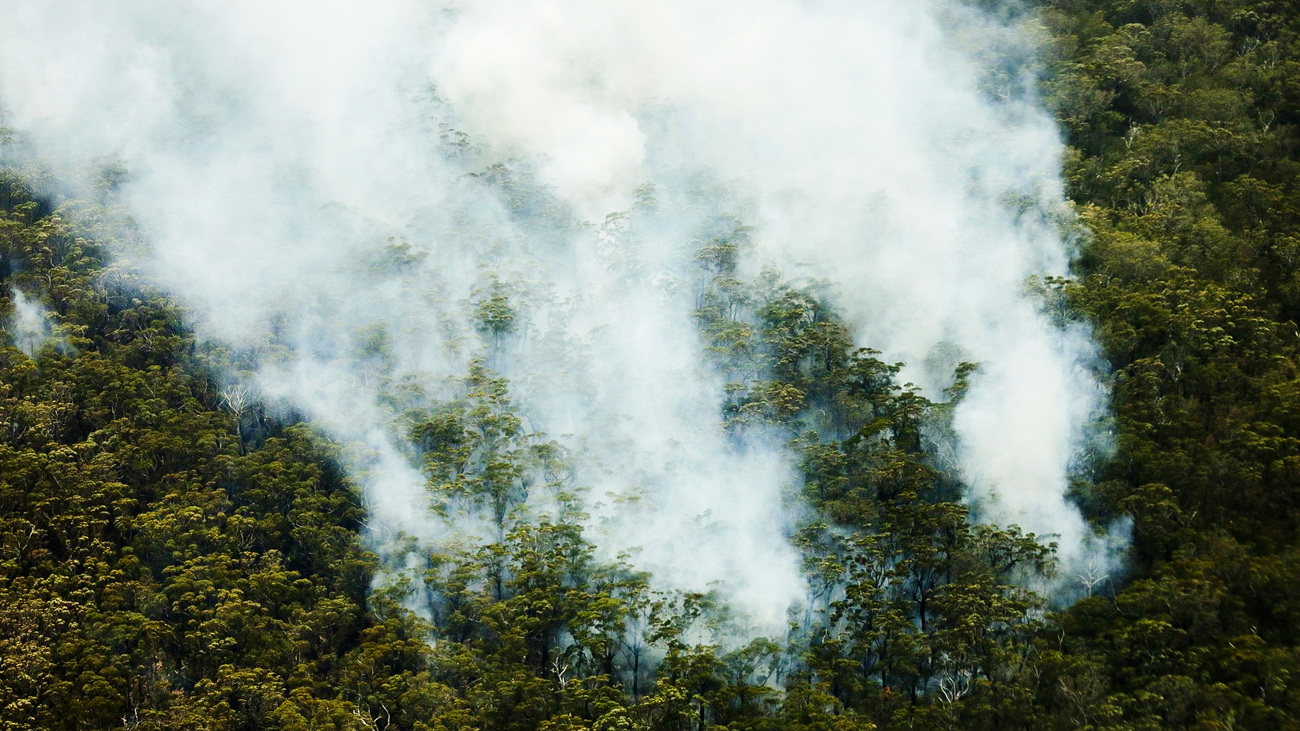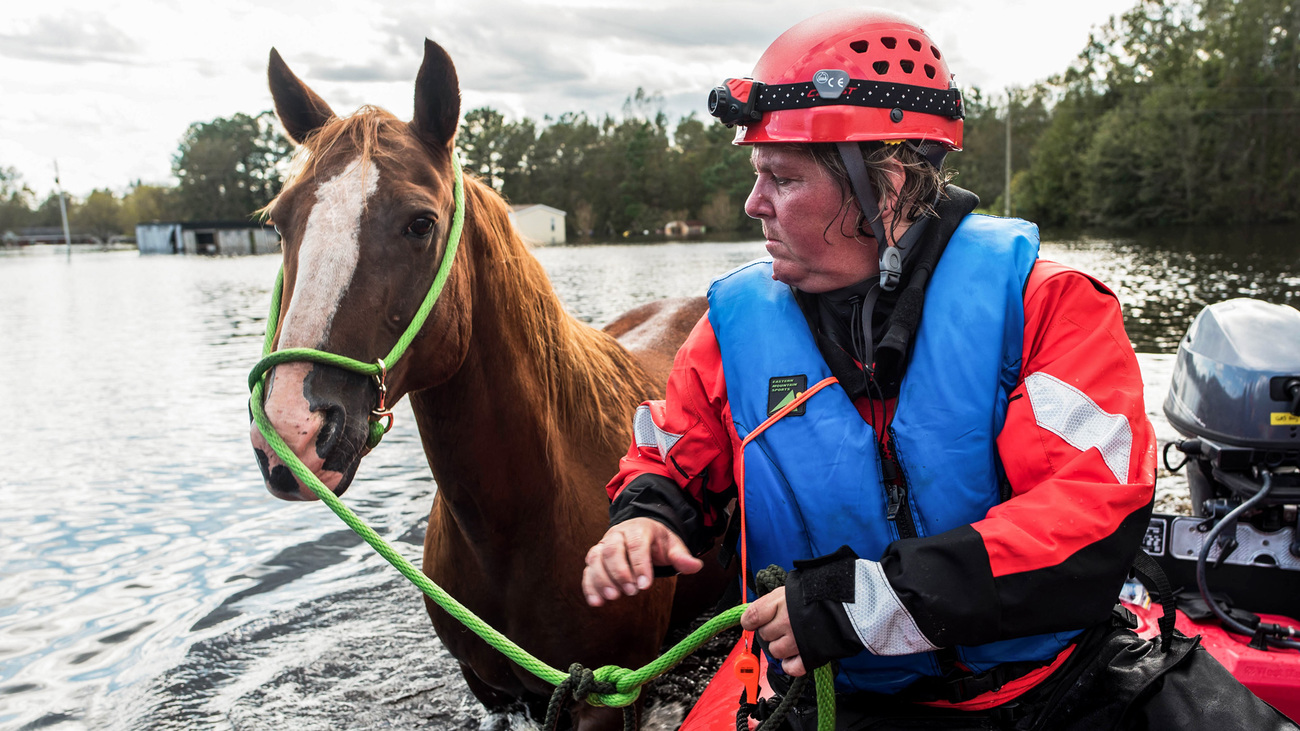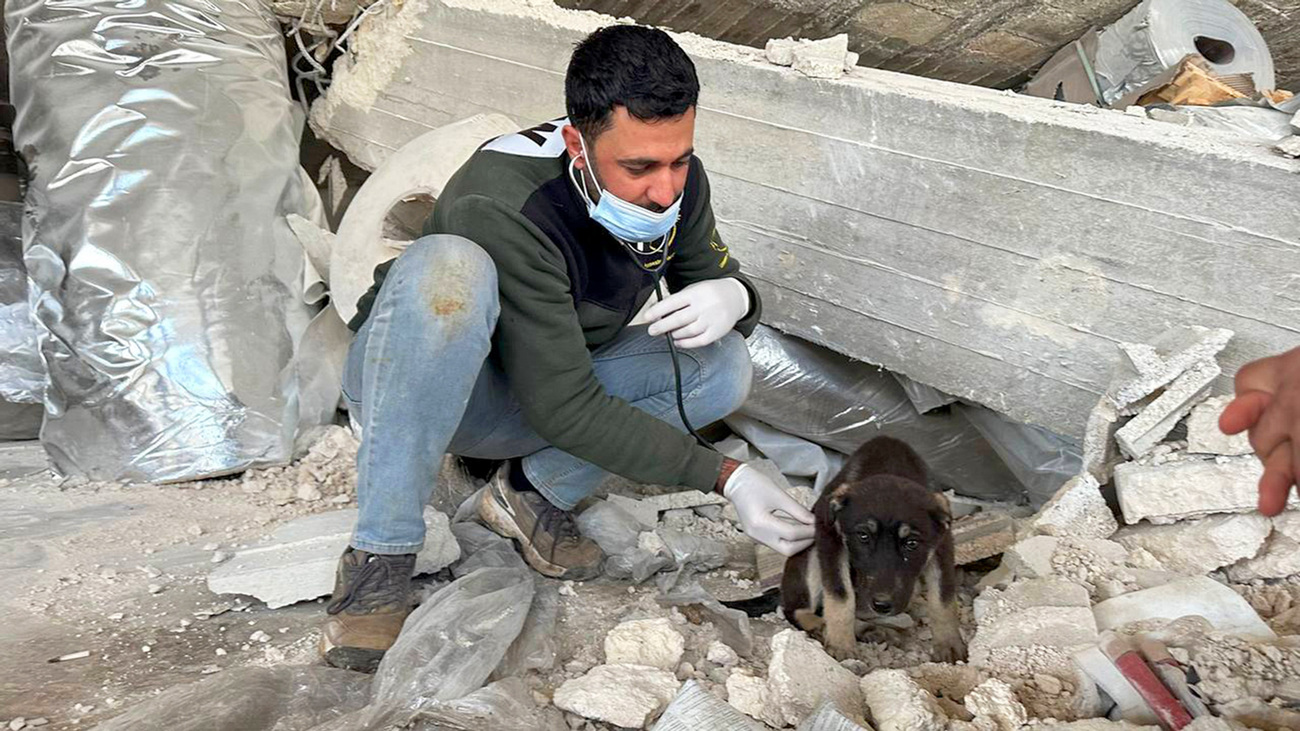Blog
Vultures: Nature’s cleanup crew and wildlife detectives
Read moreDisaster response: terms & definitions
Have you ever wondered what ‘microchipping’ means when it comes to your pets? Struggling to understand the difference between hurricanes, medicanes, and typhoons? Look no further than IFAW’s disaster response glossary below.
As a rescue and conservation organisation, disaster response is a key part of IFAW’s work. Our disaster response team is ready at a moment’s notice to help animals in need, whether they’ve been impacted by floods, fires, droughts, or hurricanes.
Learn more about IFAW’s disaster response work by checking out our programme page, and read on to learn more about terms like ‘megafire’, ‘flash flood’, and ‘tropical cyclone’. You’ll be an expert in disaster terminology in no time.
An animal rescue network (ARN) is comprised of strategically located partners, experts, and authorities, that collaborate before, during, and following a disaster. IFAW has helped develop animal rescue networks on every continent except Antarctica.

Animal search and rescue teams are trained to locate, stabilise, extricate, and evacuate animals that are injured, trapped, sick, lost, abandoned, or otherwise in distress.
Anthropogenic climate change refers to the human impact on Earth’s climate. Humans contribute to climate change in various ways, including through the burning of fossil fuels and deforestation. Learn more about climate change and its impact on wildlife. IFAW is dedicated to climate change mitigation and adaptation through nature-based solutions.
A bushfire is a wildfire that occurs in scrub or a forest. They typically spread rapidly due to the amount of fuel available. These fires are particularly common during periods of hot, dry weather in places like Australia. This terminology is used more commonly in Australia than in the US.
For over 30 years, IFAW has been working to rescue animals affected by bushfires in Australia. While Australia’s bushfires are a natural result of the continent’s hot, dry conditions—and are a normal part of the ecosystem—the effects of climate change have impacted the length and ferocity of these fires and exacerbated their destructive capacity.
Microchipping is the placing of a tiny microchip under the skin of an animal, used to register the animal in a database containing their owner’s contact information. As a preventative measure, pet owners are advised and, in some countries, required to microchip their animals to increase the chance of reuniting lost animals with their owners. Microchips are ‘read’ by a non-invasive wand-looking device used by your veterinarian or animal care provider.
In the field of disaster response, deployment is the action of sending highly trained rescuers to the scene of a disaster to work on the ground. IFAW has rescue teams that can deploy at a moment’s notice—rescuing pets during floods, searching for surviving wildlife caught in wildfires, sheltering farm animals evacuated during volcanic eruptions, and beyond. IFAW deploys rapid response teams when formally invited to support an agency or organisation having jurisdiction during the declared disaster.
In 2024, IFAW has deployed teams to disasters like Hurricane Helene, Tropical Storm Debby, and the Park Fire.
A disaster is a sudden, calamitous event that seriously disrupts the functioning of a community or society and causes human, material, and economic or environmental losses that exceed the community’s or society’s ability to cope using its own resources.
Disasters affect humans as well as animals, but the difference is that while humans can often prepare themselves, animals often require our help to survive. Domesticated animals and pets rely on their human owners, and while some wild animals can sense certain types of disasters—giving them the opportunity to flee—others need human assistance. That’s why disaster preparedness is so crucial.
An emergency evacuation is the immediate travel of people and animals from an area facing a disaster or other threat to a safer place. During or before a disaster, it is important to remember that if it is not safe for you, it is not safe for your animals. Evacuation plans should always include plans for your pets, livestock, and companion animals to evacuate as well.
An extreme weather event occurs when there is unusually severe weather or climate conditions that may have devastating impacts on communities and natural ecosystems. Types of extreme weather events include hurricanes, heat waves, tornadoes, tropical cyclones, blizzards, dust storms, and more. All of these weather events can affect animals in different ways, and many of these extreme weather events are increasing in severity and frequency due to climate change. When local community resources are overwhelmed, extreme weather events become disasters.

A flash flood is a sudden flood that is most often caused by extreme rainfall from thunderstorms, generally within a short period of time (less than six hours). Flash floods typically affect riverbeds, streets, and canyons. They can also be the result of a levee or dam breaking or other sudden occurrences.
Heat stress occurs when a human’s or animal’s body cannot rid itself of excess heat. The body becomes unable to maintain thermal equilibrium. Heat stress typically occurs due to elevated temperatures in the animal’s habitat, often alongside high humidity and slow air movement.
A megafire is a wildfire that burns more than 40,500 hectares (100,000 acres) of land.
Megafires have occurred on every continent except Antarctica, but they are most common in regions like Australia, which experiences patterns of extremely hot and dry weather. The 2019-2020 Australian bushfire season saw numerous megafires.
Non-invasive technologies are technologies used to assess disaster areas that do not disturb local communities.
Examples include the use of drones, camera traps, and satellite imagery to assess an area affected by disasters.
Preparedness is defined by the US Department of Homeland Security (DHS) and Federal Emergency Management Agency (FEMA) as ‘a continuous cycle of planning, organising, training, equipping, exercising, evaluating, and taking corrective action in an effort to ensure effective coordination during incident response’.
For IFAW, preparedness is a key part of our Disaster Response programme. IFAW works with local governments, partners, and communities to plan for the safety of both humans and animals (including farm animals, companion animals, and wildlife) before disaster strikes. We train first responders and partners in every aspect of disaster preparedness and technical response, including search and rescue, temporary sheltering, and emergency veterinary care.

In a disaster, recovery is the process of re-establishing the infrastructure and services in a community that may have been destroyed or damaged by the disaster. Specific to helping animals, recovery includes re-establishing pet food supply chains and veterinary services.
Relief is assistance provided to people and animals affected by a disaster, in the form of food, medicine, or other necessary supplies—or , or a helping hand.
Resilience is the ability of a community or area to survive and thrive following a disaster and withstand future shocks. IFAW’s work does not stop when the immediate crisis is over. When we leave a disaster zone, we endeavour to leave a community with improved skills and resources and the courage to build a more resilient home for people and animals.
A disaster response can take many forms. It can involve awarding emergency grants to support local organisations with animal food, veterinary care, and supplies, providing subject matter expertise, and/or deploying trained responders to help local organisations and communities save animals.
Reunification is the process of bringing together displaced animals and their owners. IFAW recognises how important humans and animals are to each other, and we do everything we can to keep families together. In addition to reuniting families and animals, we work with local authorities, organisations, and communities to keep these families together by providing food, supplies, and veterinary care in times of crisis.
Storm is a generic term often used to describe a large variety of atmospheric disturbances and weather events, ranging from rainstorms and snowstorms to thunderstorms, wind, and wind-related disturbances, such as gales, tornadoes, tropical cyclones (including hurricanes), and sandstorms.
Temporary emergency sheltering for animals may be set up prior to or in the wake of a disaster by governments and animal rescue organisations to protect livestock and companion animals who have been displaced. When possible, to reduce anxiety and resources needed for operations, temporary emergency shelters should provide options for families with animals to stay together.
Triage is the assessment of patients during a disaster. Professionals use triage to determine the urgency of animals’ need for veterinary treatment and what type of care is required.
A tropical cyclone is a storm that forms over tropical or subtropical waters that consists of a warm-core, low pressure system, without a front, and has organised circulation. Hurricanes and typhoons are both examples of tropical cyclones.
Hurricanes and typhoons are the same type of storm, but the names differ depending on their region. In the North Atlantic and Northeast Pacific oceans, the term ‘hurricane’ is used, but in the Northwest Pacific, ‘typhoon’ is the common name. In the South Pacific and Indian oceans, these storms are often just called tropical cyclones.
Medicanes, on the other hand, are similar storms to tropical cyclones, but they form over the Mediterranean Sea.
Learn more about IFAW’s response efforts to Hurricane Helene and Hurricane Milton, two storms which struck the US, Mexico, and the Caribbean in 2024.
A wildfire is an uncontrolled fire that burns across areas of wild vegetation, including forests and grasslands.
At IFAW, we respond to disasters and rescue wildlife because we believe every individual animal matters. We also believe humans have a responsibility to protect the planet from climate change impacts. Support our work by donating today.
Our work can’t get done without you. Please give what you can to help animals thrive.
Unfortunately, the browser you use is outdated and does not allow you to display the site correctly. Please install any of the modern browsers, for example:
Google Chrome Firefox Safari